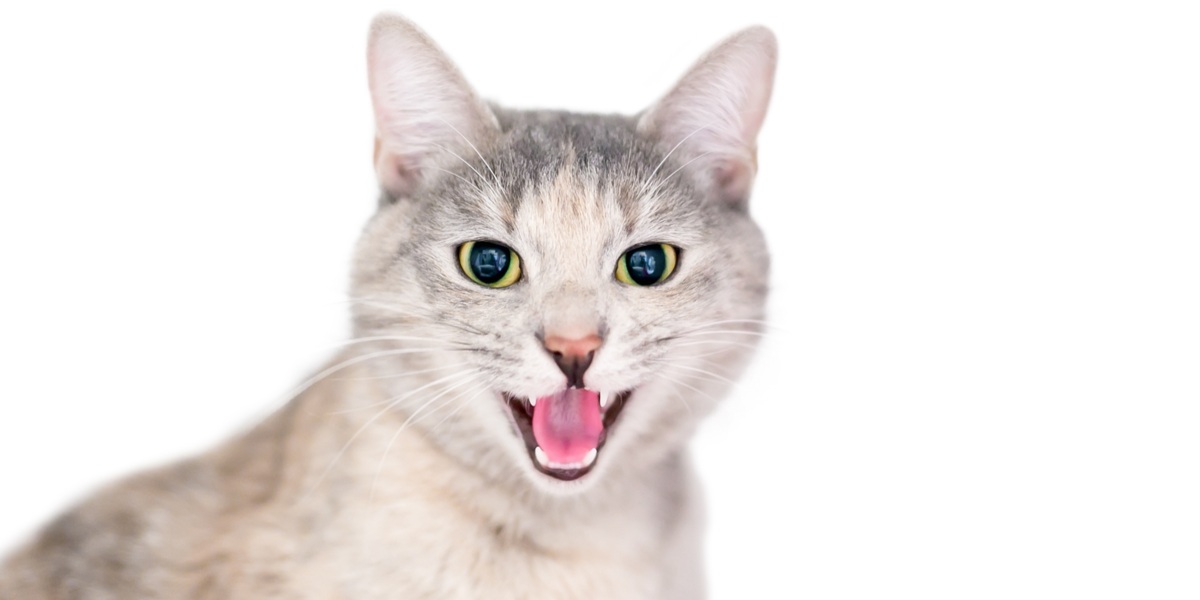
Cats have a diverse vocal range of sounds. In fact they have one of the largest patterns of vocalization of all carnivores, they can express around 100 different phonations as compared to dogs who can only communicate about 10 sounds.
Cats communicate between members of their own species and with other species to express how they feel in their own unique way. Researchers have found that the environment plays a crucial part on the vocal behaviour with untamed cats and pet cats vocalizing inversely.
Let’s review the foremost common sounds cats make and decipher their meaning.
Vocal Communication
Despite the pet cat being a solitary species, domestication has led to several social and behavioural changes with the flexibility to cohabitate plus communicate to suit the cat’s needs.
Verbal communication is distinguished by four categories:
Agonistic exchanges
Sexual interplay
Queen-kitten interactions
Cat-human conversations
In one study vocalizations were categorized as murmur, vowel and strained intensity patterns while in another study, researchers separated cats sounds into closed mouth, fixed open mouth and sounds produced with the open mouth steadily closed.
Distinctions have also been seen between pet cats and feral cats with domesticated cat’s vocalization of higher frequency but shorter length during exchanges with humans including more communication with people.
List of Vocalizations Made by Cats
The most common vocalizations made by cats and they’re meaning are:
1. Meow or Miaow
Cats make a widespread of meowing sounds, differing in intensity, length and frequency occurring in a wide selection of contexts with an oversized amount of variation accustomed to communicating various messages.
Cats tend to direct meows more to humans instead of other cats. Although meows are heard between mother-kitten exchanges, they’re rarely heard during domestic cat-cat interactions.
The function of the meow is commonly solicitation (greeting, attention, food related or when a kitten is separated from the queen). If the meow motivation is frustration (not having the ability to gain access outdoors or obtain food), the meow may be longer and more frequent.
2. Purr
Purring is the most recognised murmur sound with one among all time low pitch tones made by felines.
Purring is produced by muscular narrowing of the laryngeal muscle when the mouth is closed for the duration of respiration, it will be heard both during inhalation and exhalation, giving it a rhythmic feature which will be continued for extended periods.
Felines can adjust the volume at which they purr, depending on their emotional intensity, the most foremost changeable is the purr volume between individuals, with some purring at hardly audible levels whilst other purring loudly keeping owners awake night-time.
Cats purr in many situations – both positive and negative contexts. Queens purr whilst nursing kittens while kittens purr during nursing sessions. Cats also purr when resting or rubbing alongside a feline companion, when greeting their owners and when being stroked or groomed on an owner’s lap, it’s thought in such instances purring communicates contentment.
Listen to this video to hear a cat purr.
Veterinarians and pet parents have noticed that certain cats purr when they’re in pain and a few have seen queens purr during labour.
There isn’t sufficient evidence to conclude the function of purring during negative contexts, however it’s likely that purring in such situations have likelihood of self-healing functions and pain relief.
3. Trill/Chirrup
The trill’s function is to communicate greeting, getting attention and inciting friendly interactions with other cats. The chirrup form of the trill is used by the queen to call her kittens, however, also happens between adult cats.
Trills and chirrup are directed towards people and appears along with meowing. The Chirp high-pitched sound has also been thought to mimic bird or rodent chirp to entice prey.
Watch this cat trills at her owner when woken from a nap
4. Chatter/Chitter
Cat chatter occurs when a cat is viewing prey that’s unattainable. It’s usually directed towards birds but may be targeted towards other prey and even toys. The clicking sound is produced in sequences with the jaw and a tensely open mouth.
No-one is certain the true function of this behaviour, however there are few theories comprised of signs of conflict of frustration in attaining prey, prey capture anticipation, impersonation of prey vocalizations and therefore the kill bite theory.
In this video a cat chatters during play with a feather toy.
5. Hiss
The hiss is identifiable because of its distinct sound. The hiss is a lengthy exhalation produced while a cat’s mouth is wide open with teeth exposed.
There’s slight variation between cats in the hiss sound made in comparison to meows, yowls and shrieks. The hiss sound is made in agonistic situations or defensive encounters to warn others and accompanied by changes to body posture.
6. Snarl
The Snarl sound happens during a fast inhalation. The phonation is harsh, loud, high-pitched vocalization produced with open mouth generally during active aggression or when in pain.
Snarls likewise employed in offensive and defensive interactions, both between cats and towards other animals to frighten or intimidate an enemy.
7. Shriek
When a cat shrieks, it communicates intense negative emotion like fear and/or pain. If the threat intensifies by moving nearer, a feline may emanate a sudden loud shriek to startle the opponent and allow the cat a fast escape or attack (Brown and Bradshaw, 2014).
Pain shrieks are short intense cries of tense vowels depicted by a great strain of mouth plus throat and therefore the force of breath (Moelk, 1944).
Conclusion
Cats are great communicators and if we pay close attention to their vocalization, body language and facial expressions, we’ll realise they’re trying to converse with us and convey vital information about their overall health and wellbeing.
Also Read: Why Do Cats Hiss & What You Need To Know
Frequently Asked Questions
What do my cat’s vocalizations mean?
Your cat will make distinct sounds to express how they feel and to communicate with you and other cats. Different sounds can vary between individuals and breeds, you will have to decipher the context and message your cat is trying to articulate. Some will convey pleasure, comfort and excitement whilst other frustration, fear or pain.
What are the different cat sounds?
The sounds a cat make is split into three groups: vowel sounds, murmur sounds and hostile calls. Vowel sounds produced when a cat opens and closes its mouth like a meow, howl or chatter. Murmur sounds typically formed with the mouth closed like purr, trills and chirrups whilst tense sounds are made with an open mouth used in offensive or defensive interactions like yowl, hiss, snarl, spit and growl.
What are the 16 known cat words?
Cats are intelligent species who can understand between 20 – 50 words including their name. They recognise short words and associate them together with your tone of voice including, vocalism and body language correlating them with play, feeding, incentives and stroking. Common cat words are meow, purr, paw, cat, head, ear, nose, eye, food, bowl, bed, mouse, bird, water, etc.
Why is my cat yowling?
A cat who’s yowling (long and loud call) is communicating several things. Generally yowling is a form of aggression aimed towards another cat or an animal whereby a cat expresses a warning thanks to a threatening situation or territory invasion. Yowling may imply pain, illness or convey a feline’s reproductive status during mating season.
Cats.com uses high-quality, credible sources, including peer-reviewed studies, to support the claims in our articles. This content is regularly reviewed and updated for accuracy. Visit our
About Us page to learn about our standards and meet our veterinary review board.
Atkinson, T. (2018). Practical Feline Behaviour. Oxfordshire: CAB International, 22-28. Retrieved October 09, 2021
Care, I. C. (2018, October 05). Cat Communication. Retrieved October 13, 2021, from iCatCare: https://icatcare.org/advice/cat-communication/
Care, I. C. (2020, September 01). Module 2: Senses and communication – Vocalisations and their use in communication. UK. Retrieved October 08, 2021
Chloé Tavernier, S. A. (January 2020). Feline vocal communication. Journal of Veterinary Science, 18-21. Retrieved October 11, 2021, from https://www.ncbi.nlm.nih.gov/pmc/articles/PMC7000907/
Heath, I. R. (2016). Feline Behavioral Health and Welfare. St Louis, MO: Elsevier. Retrieved October 10, 2021
Schötz, S. (September 2015). Agonistic vocalisations in domestic cats: a case study. Lund University, (pp. 86-87). Retrieved October 11, 2021, from https://www.researchgate.net/publication/281610389_Agonistic_vocalisations_in_domestic_cats_a_case_study






